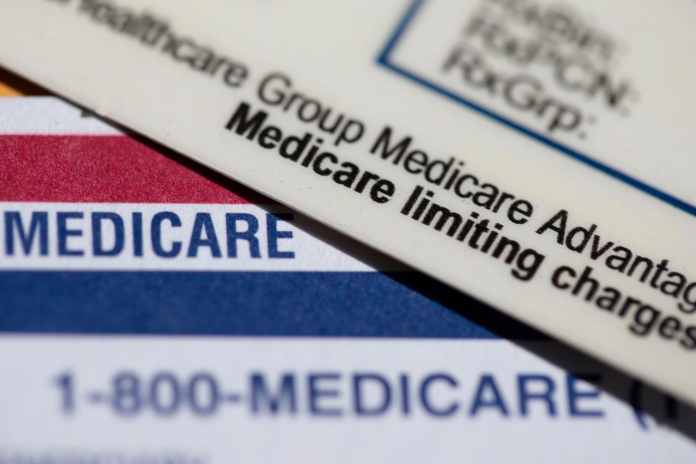Kronick hoped his study would show that insurance really was a matter of life or death – and perhaps shift the national discussion. It was clear where he stood on the issue. He was a few months away from taking a health policy job in the Obama administration as it rolled out the Affordable Care Act.
But his results were not what he expected. He even considered burying what he found.
Kronick’s 2009 study, published in the Health Services Research journal, showed “little evidence” that giving health insurance to more people would have a big effect on the number of U.S. deaths. His work criticized an earlier, widely cited study from the Institute of Medicine, part of the National Academy of Sciences, that claimed a lack of insurance resulted in 18,000 excess deaths a year. That was, Kronick wrote, “almost certainly incorrect.”
“I was pretty aware of the political difficulties for me,” Kronick said recently. “But also as a scientist I felt it was important to make the evidence clear.”
It would take more than a decade before the evidence became strong enough to convincingly show that health insurance actually saves lives, although researchers still aren’t sure precisely why.
Kronick’s failure to find a clear link between insurance and mortality at the time echoed several other studies that found that while uninsured people tended to die earlier, it wasn’t possible to definitively link the two. Too many other factors were in play. The topic could be surprisingly complex – some research even indicated uninsured people might live longer because many of those willing to go without insurance tended to have fewer medical problems.
Other issues were considered settled: Studies consistently showed that health insurance made people less likely to face medical debt or bankruptcy.
But the evidence on mortality, for the moment, wasn’t there.
The lack of a clear result helped fuel the national debate. If insurance fell short in the ultimate measure of health outcomes, was it really that important?
“The Spurious ‘People Will Die’ Claim,” read a commentary headline from the libertarian think tank Mercatus Center. The fact-checking site PolitiFact used Kronick’s study to cast doubt on a congressman’s claim that 22,000 Americans die each year from lack of health insurance. In 2017, Rep. Raúl R. Labrador (R-Idaho) told a town hall crowd that, “Nobody dies because they don’t have access to health care.”
The ACA became law despite some lingering doubts about insurance’s impact on deaths – and, in doing so, unexpectedly gave researchers the conditions needed to run something close to a true national experiment.
The Supreme Court ruled that the ACA’s Medicaid expansion to more low-income people was optional for states – and about half decided against doing it. Researchers suddenly had a way to look at the effects of health insurance in real time, with an effectively random selection of Americans.
“We had many discussions about how terrible decisions (about Medicaid expansion) would be devastating in the real world but a gold mine for researchers,” Kronick said.
A flurry of studies followed.
Benjamin Sommers, a doctor and health economist at the Harvard T.H. Chan School of Public Health, co-wrote a 2019 review that evaluated the research on ACA’s impact on health outcomes. While the studies were not unanimous, there was a sharp trend.
One study that he cited estimated an 8 percent drop in mortality among older adults in expansion states, resulting in roughly 19,200 fewer deaths in the first four years of the ACA. Another found a drop of about 3 to 6 percent in disease-related deaths among young adults in states with expanded dependent coverage.
“We have better evidence for this than for other things taken as a given,” Sommers said in an interview.
Then came the Internal Revenue Service data.
In 2017, the IRS accidentally created a randomized experiment when it mailed letters to nearly 4 million American taxpayers who’d paid a penalty two years earlier for failing to get health insurance under what was then an ACA mandate. The letter encouraged them to sign up for health insurance.
But the IRS didn’t mail letters to every penalty-payer. About 15 percent didn’t get one – creating a control group. Researchers wanted to know what happened to people who received letters and got insured. This group with new policies saw a much lower mortality rate over the next two years among people 45 to 64 years old.
“The IRS study finished it for me,” Sommers said. “I don’t have much doubt in my mind anymore.”
The study’s design made it so “we could be more confident about assessing causation,” said Jacob Goldin, one of the authors of the IRS study and a law professor at the University of Chicago.
Goldin said they still don’t fully understand why health insurance drove down deaths. It’s possible insurance encourages people to see a doctor more quickly for ambiguous problems that turn out to be life-threatening conditions. Insurance might also open up the door to preventative visits and lifesaving medications, he said.
“We don’t know exactly as much as we’d like to about why this happens,” Goldin said.
Researchers also don’t know why health insurance appears to play a role in mortality even when it shouldn’t.
A 2010 study found uninsured gunshot victims were significantly more likely to die in the hospital than gunshot victims with insurance. The authors couldn’t attribute the difference to injury severity, demographics or medical treatment, as hospitals are required to treat emergency patients and, in this study, the two groups had similar surgery rates. They theorized that insurance coverage “may reflect the many social determinants of health.”
A 2022 study found similar results with auto accident victims in emergency rooms. Those authors also struggled to explain what they observed. They suggested the higher death rate could have something to do with uninsured victims being more risk-tolerant or poorer, and thus more likely to drive recklessly or drive older cars with fewer safety features.
These studies seemed like observational outliers as long as the question of insurance’s impact on mortality remained unresolved.
But earlier this year, a new study came out with a rigorous assessment of the state of research on health insurance and mortality.
The 2025 Annual Review of Public Health study, which focused on mortality, found the evidence had become so much stronger since it last looked at the issue in 2008 that it “now unequivocally supports the conclusion that health insurance improves health.” Despite deaths setting a high statistical bar because they are relatively rare and are hard to clearly correlate, according to the study, “we know that the available evidence now clears this bar.”
The study did not explore why insurance appeared to save lives. But the effect appeared to be strongest among adults older than 45 and, to a lesser extent, younger adults.
“This is a big deal,” said Helen Levy, co-author of both reviews and a professor at the University of Michigan’s Institute for Social Research. “We know health insurance saves lives. Full stop.”
That finding has yet to be fully embraced in the current political debate.
This summer, when an audience member at a town hall event in Iowa shouted that people will die as a result of proposed cuts to Medicaid insurance, Sen. Joni Ernst (R-Iowa) replied flippantly, “Well, we all are going to die.”
Is health insurance a matter of life and death?
RELATED ARTICLES



